1910s – Gregorio Conti (March 17, 1874, to ?). In his autobiographical work “Vita di Capomafia,” Nick Gentile states that Conti was the leader of the Mafia in Pittsburgh in 1915. Conti and his nephew Peppino Cusumano ran a wholesale wine and liquor establishment. While Conti led a Mafia organization of Sicilians and Calabrians, a rival Neapolitan Camorra group in Pittsburgh was led by Ferdinand Mauro. A Mauro lieutenant in Johnstown was named Calabro.
1920 – Salvatore Calderone (1858 to 1933). Calderone led a Pittsburgh criminal organization through the early years of the Prohibition Era and, according to Nick Gentile, he was influential during the time of Gregorio Conti (above). Eventually Calderone allowed others to take control of day-to-day underworld operations, serving as an adviser to Mafiosi in the Midwest.
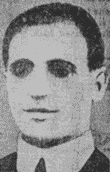
1925 – Stefano Monastero (March 3, 1889, to Aug. 6, 1929). Monastero led a Pittsburgh underworld clan during the later Prohibition Era, supplying sugar and other bootlegging commodities. His group eclipsed that of Calderone, who retired. The Monastero organization, largely comprised of immigrants from the area of Caccamo, Sicily, briefly lost ground to Luigi “Big Gorilla” Lamendola in the mid-1920s. Lamendola, a castoff of Al Capone’s gang in Chicago, increased in strength until he was shot down in front of his Chatham Street restaurant/headquarters on May 20, 1927. Monastero’s gang is also believed responsible for the bombing of a rival bootleg supply warehouse in 1929.
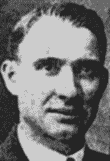
1929 – Giuseppe Siragusa (1882 to Sept. 13, 1931). Monastero and his brother Sam were murdered in front of St. John’s General Hospital on Aug. 6, 1929. Joe “the Ghost” Pangallo is suspected of orchestrating the hit. “Yeast Baron” Siragusa, who became wealthy selling yeast to home breweries during Prohibition, took over leadership of the Pittsburgh family. It is believed that Siragusa was a loyal follower of the Brooklyn Castellammarese family led by Stefano Magaddino and later Salvatore Maranzano.
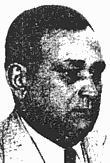
1931 – John Bazzano (1890 to Aug. 8, 1932). Siragusa is shot to death in his large Squirrel Hill home on Sept. 13, 1931. Due to the timing (just days after Salvatore Maranzano was assassinated in New York), Siragusa was said to have been a casualty of Lucky Luciano’s supposed “purge” of the American Mafia. Coffee shop owner Bazzano became boss upon Siragusa’s death. Like Siragusa, Bazzano catered to home breweries during Prohibition, selling them yeast and sugar. Bazzano’s reign turned out to be even shorter than Siragusa’s, as he entered into a deadly feud with the Volpe brothers.
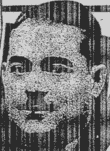
1932 – John Bazzano is believed to have ordered the hit that resulted in the deaths of three Volpe brothers (there reportedly were eight brothers in the Volpe family), James, Arthur and John (at right), on July 29, 1932. The killings took place at Bazzano’s coffee shop.
1932 – Vincenzo Capizzi (1884 to ?). Bazzano was found dead of 22 (or 27) ice pick wounds in a large sack in the Red Hook section of Brooklyn, NY, on Aug. 8, 1932. Santo Volpe, boss of the Scranton mob family and unrelated to the recently murdered Volpe Brothers, was a suspect in the killing (as was Brooklyn’s Albert Anastasia). Authorities believed Bazzano was lured to New York for a dinner after Volpe appealed to the Commission for justice. Bazzano was succeeded by Capizzi, whose five-year reign became the longest in Pittsburgh Mafia history. The Pittsburgh family became aligned with the Genovese Crime Family in New York, which represented Pittsburgh at meetings of the eastern Commission.
1937 – Frank Amato (c.1893 to 1973). Capizzi retired in 1937. The Pittsburgh family experienced a prolonged period of leadership stability under Amato. Amato’s son, Frank D. Amato Jr., followed his father into the Mafia. (Frank Jr. was a gambling bigshot who managed to avoid attention from media and law enforcement until his death in 2003 at the age of 75.)
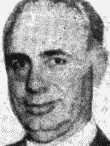
1956 – Sebastian LaRocca (1901 to Dec. 3, 1984). “John” LaRocca, who appears to have had some family relationship with Amato and a background in the Scranton mob, served as the supreme boss of the Pittsburgh family from 1956 (when Amato turned over command and became a LaRocca adviser – serving first as underboss and then as consigliere) until his death of natural causes in 1984. Under LaRocca, the mob became a powerful force in Pittsburgh area labor unions and established rackets in Ohio, sharing some of that income with the Cleveland Mafia. LaRocca also brought his family into an agreement with Tampa’s Santo Trafficante for management of the Sans Souci casino in Havana, Cuba.
1957 – LaRocca was one of the attendees of the Apalachin conference. He was accompanied by his lieutenants, Michael James Genovese and Gabriel “Kelly” Mannarino. (Mannarino later took part in efforts to wrest Cuba from the control of Fidel Castro.)
1978 – Ailing LaRocca turned leadership of the family over to a panel including Michael Genovese, Gabriel Mannarino and Joseph “Jo Jo” Pecora of West Virginia. A prison sentence for gambling immediately took out Pecora.
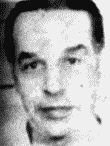
1980 – Michael Genovese (April 9, 1918 to Oct. 31, 2006). Genovese became sole acting boss under ailing Sebastian LaRocca in 1980, as Mannarino died July 11 of cancer.
1984 – While law enforcement watched “Jo Jo” Pecora, Michael Genovese took the family reins upon 82-year-old LaRocca’s death (at his home in suburban McCandless Township) in 1984. Under Genovese’s leadership, the Pittsburgh mob became a middle man in drug deals with distribution rings in the Midwest and Northeast and began making moves into Ohio territory vacated by a weakened Cleveland Mafia. The family was also linked with an attempt to infiltrate an Indian casino near San Diego.
1990 – The Pittsburgh organization began to crumble after the successful prosecutions of underboss Charles Porter and lieutenant Louis Raucci Sr. and the subsequent defections of Porter and Lenny Strollo.
2000 – Federal agents believed Michael Genovese, then 82 and living in rural West Deer, PA, was still in control of the remnants of the Pittsburgh Mafia family. Genovese died in 2006 at the age of 87. Though he had served some time behind bars for refusing to testify, prosecutors were never able to assemble a successful racketeering case against him.
